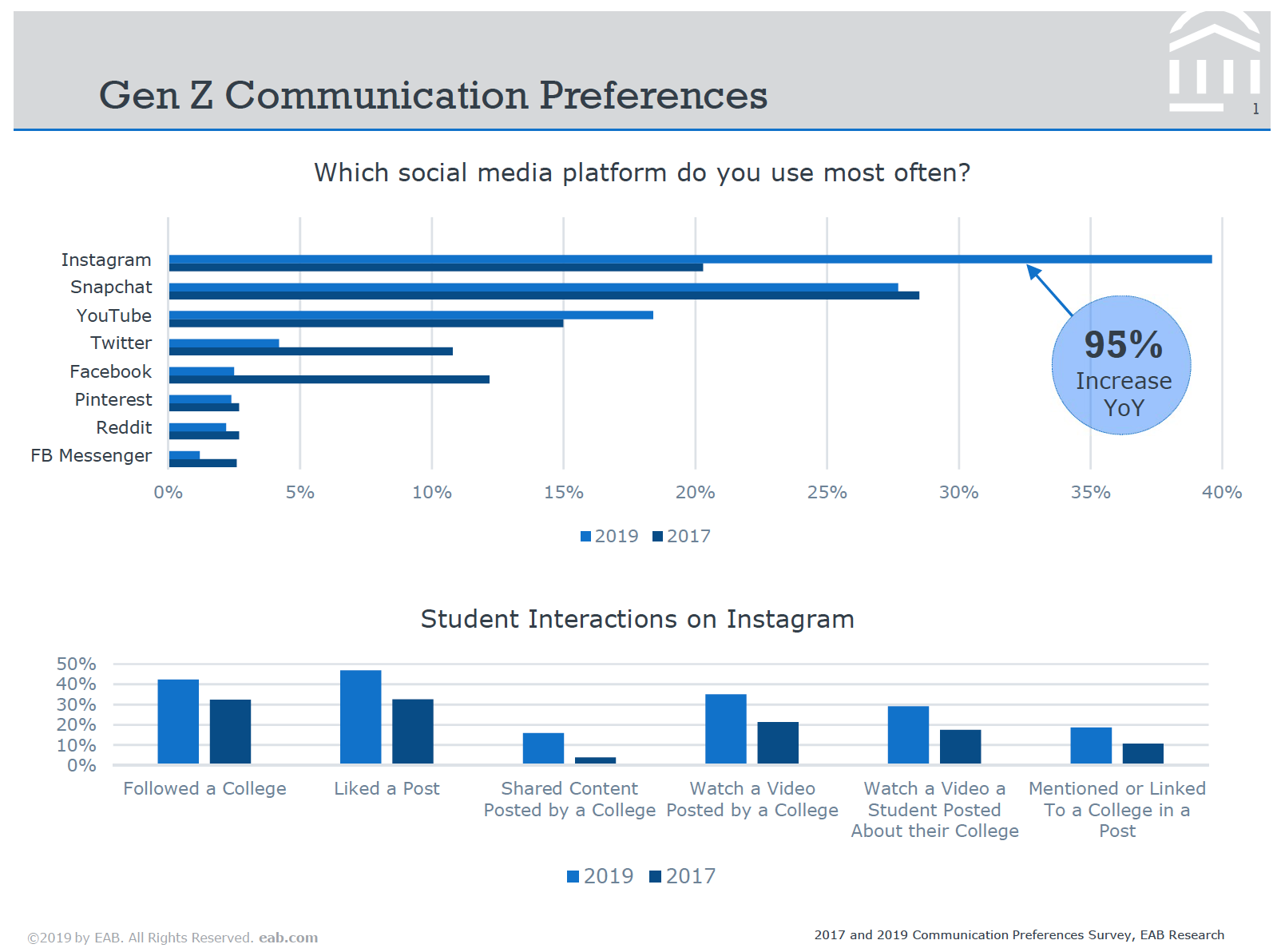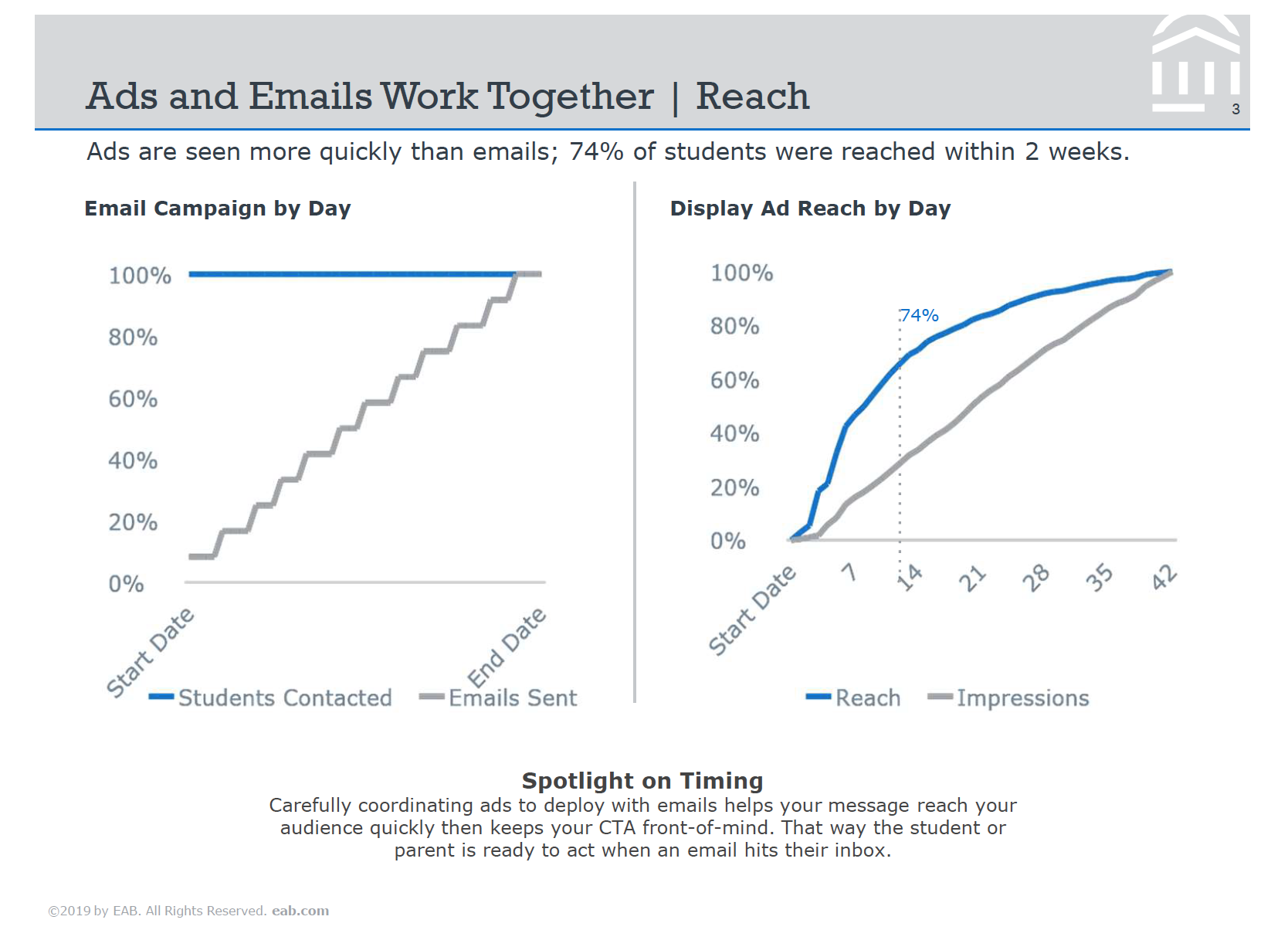You have /5 articles left.
Sign up for a free account or log in.
One of the biggest challenges with using social media for recruitment and enrollment growth in higher education has always been the ability for institutions to find ways to measure the return on investment of all of their digital engagement activities.
There are plenty of examples of how social media have been used for brand building and awareness, but it can be tricky to keep track of a prospective students' recruitment journey due to the potential for multiple engagement points.

Recently, an attempt was made to try to suss out, in a meaningful way, how social media engagement with paid ads could be directly connected to the process of inquiry generation.
EAB, a DC-based higher education research and consulting firm, partnered recently with several colleges and universities to test audience reach and engagement for a series of ads on Snapchat, Instagram, and Facebook. These tests were part of EAB's 2019 survey of student communication preferences.
Using A/B testing, social media ads on the above-mentioned platforms were present for B whilst email was used in both A/B. The irony of course being that the rumors of email's death have always been greatly exaggerated. Inquiry generation for admissions requires a precise array of digital engagement channels.
Well-placed ads on social media actually helped increase responses to calls to action that were present in emails. In other words, it all matters and everything needs to be strategically joined up when it comes to digital.

So how did ads fare in the tests between Snapchat, Instagram, and Facebook?
Well, it turns out that paid social on Snapchat, at least with teenage prospective students, was the frontrunner for overall engagement with 16% greater overall reach.
Sponsored Instagram Stories garnered 140% more impressions and 33% greater reach than content placed in Instagram's Feed.
Facebook owns Instagram, so in many ways, Facebook will always be relevant due to their massive data pool. Compared to Snapchat, Facebook still leads the way with the depth of its analytics/insights.

Sponsored Instagram Stories were much more effective at "driving an audience to a landing page" than feed-based ads on Facebook or Instagram.
Additionally, as part of the EAB research, pre-roll ads for YouTube were shown to be a low-cost way of "meeting students where they are." However, according to Emily Bauer, Vice President, Program Marketing at EAB, videos have to either be exceptionally polished or have a realness factor that conveys a fresh story. Videos that either look like they are dated (or are actually from a few years ago) tended not to do as well with pre-roll ad audiences.
In the near future, EAB plans to incorporate TikTok, WhatsApp, and WeChat into their student communication preferences research.
Do you tweet? Let's connect. Follow me on Twitter.




